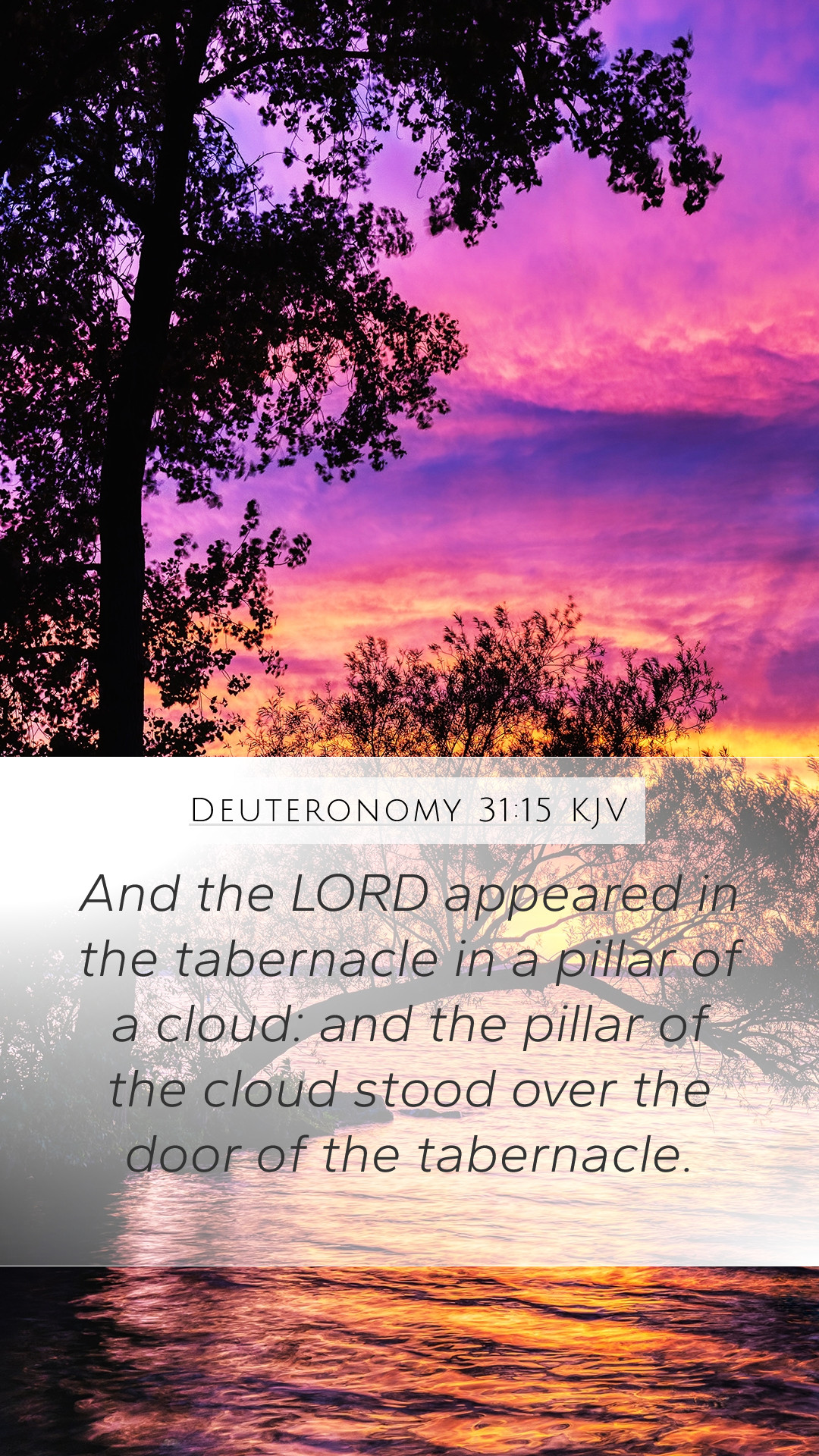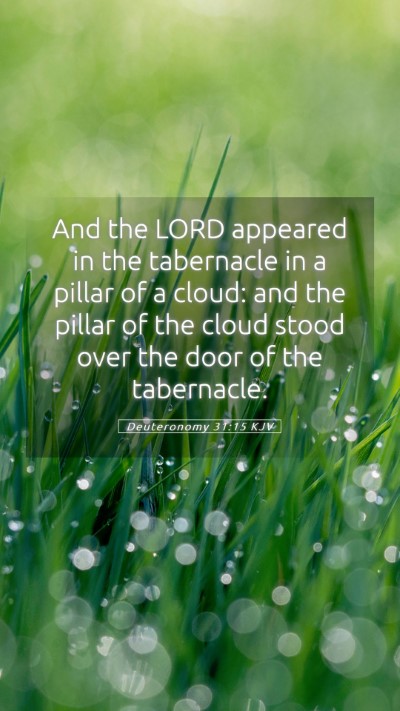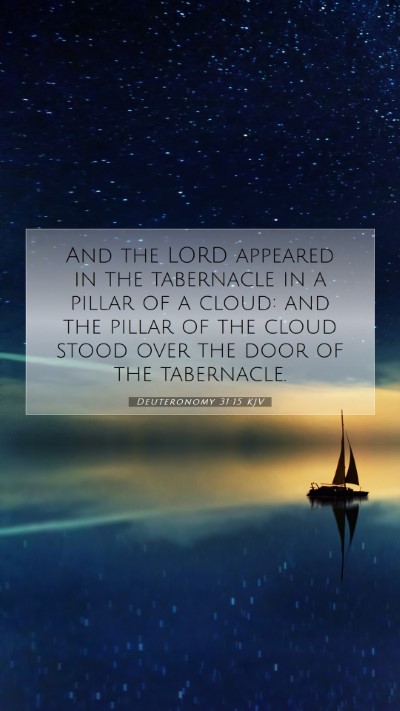Understanding Deuteronomy 31:15
Bible Verse: Deuteronomy 31:15 - "And the Lord appeared in the tent in a pillar of cloud: and the pillar of the cloud stood over the door of the tent."
Overview: Deuteronomy 31:15 describes a significant moment in Israel's history, where the presence of God is made manifest in a cloud above the tent of meeting. This verse emphasizes God’s direct involvement with His people and serves as a reminder of His guidance and covenant promises.
Commentary Insights
-
Matthew Henry:
Henry notes that the appearance of the Lord in a pillar of cloud signifies His glory and divine presence among His people. It was a visible manifestation that assured the Israelites of God’s guidance as they prepared to enter the Promised Land. This cloud not only provided comfort but also emphasized the importance of worship and obedience to God’s commands.
-
Albert Barnes:
Barnes emphasizes the significance of the cloud as a guide and protector for the Israelites, showing that God's presence was a continual source of strength. The depiction of God's presence in this manner serves to highlight the unique relationship between God and the nation of Israel, suggesting that He dwell among them and take an active role in their journey.
-
Adam Clarke:
Clarke discusses the implications of God appearing in a cloud, pointing out that such manifestations in the Old Testament were often intended to signify God's holiness and majesty. He stresses that the cloud serves as a barrier that allows for God's presence to coexist with humanity, underscoring the need for reverence when approaching God.
Biblical Exegesis
This verse can be analyzed through various lenses such as theological, historical, and cultural. It encourages believers to recognize the tangible ways in which God communicates with His people throughout history.
- Theological Significance: The cloud represents not just God's presence but also His guidance, reflecting the broader theme of God's leading throughout the Scriptures.
- Historical Context: Understanding the tent of meeting and its purpose reveals insights into Israel's worship practices and the centrality of God's presence in their community.
- Cultural Relevance: The imagery of God's presence in a cloud would resonate with the ancient Israelites, who viewed physical manifestations as confirmations of divine favor.
Applications for Daily Life
In a contemporary context, this verse invites believers to consider how they recognize and respond to God's guidance in their lives. Just as God was present with the Israelites, He seeks to be present with us today through His Word, the Holy Spirit, and the community of faith.
- God's Guidance: Trusting in God's lead, as exemplified in this scripture, encourages personal reliance on God for direction.
- Worship Practices: The verse underscores the importance of worship and creating spaces where believers can encounter God's presence.
- Community Connection: It emphasizes the role of the community in collectively seeking God, paralleling the communal aspect of ancient Israel's worship.
Cross References
- Exodus 33:9-10: Demonstrates God's glory presence in the tent of meeting.
- Numbers 9:15-16: Discusses the cloud covering the tabernacle, reinforcing God's guidance.
- 1 Kings 8:10-11: Refers to the glory of the Lord filling the temple.
Conclusion
Deuteronomy 31:15 serves as a profound reminder of God's active presence among His people, encouraging believers to seek and respond to His guidance in their daily lives. As we study this verse, we gain deeper insights into the nature of God and the importance of faithfulness in our walk with Him.


